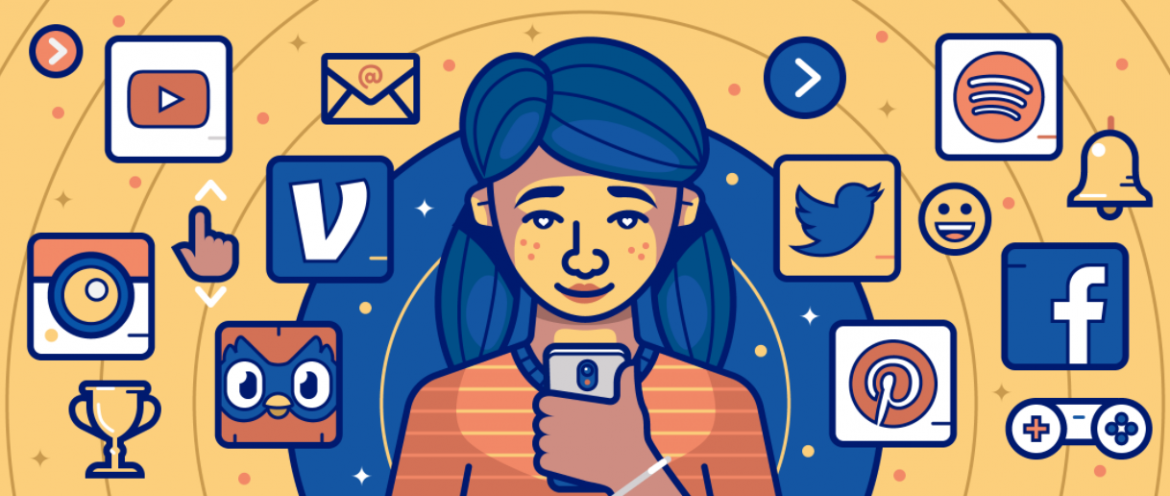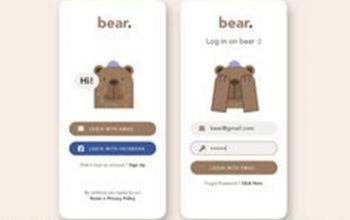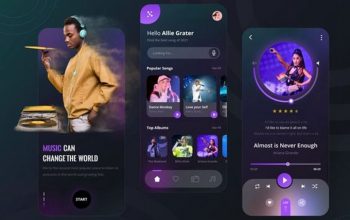Cannot put down your cellphone for a relaxation? You might have Aristotle to thank for that.
That’s as a result of BJ Fogg, the psychologist chargeable for the theories and strategies firms use to create addictive cell apps bought the concept for them whereas he was studying Aristotle’s works.
Aristotle was obsessive about discovering the patterns behind occasions and phenomena that appear unpredictable, however the truth is, are. And whereas studying his treatise on persuasion, Fogg realized that his concepts may very well be used to design computer systems (and software program) that elevated a person’s need to make use of them.
So if it appeared like constructing an addictive cell app solely occurs by probability, the reality is, there are literally concrete the explanation why some apps are irresistible and others are forgotten.
Table of Content
- Most Addictive Apps Are Impossible To Put Down
- buy ios ranking
- buy cheap ios installs
- play store algorithm
Right here’s why essentially the most addictive apps are so laborious to place down and how one can apply the methods they use to enhance person engagement and retention for yours.
Habits Design: The Science That Makes Apps Addictive
The scientific area that BJ Fogg developed from his preliminary analysis in 1997 is called Habits Design. The concept behind it’s that computer systems will be designed such that they influenced the conduct of the individuals who used them:
Seems like a terrifyingly good concept, proper?
Certainly, Habits Design is a controversial science. Whereas Fogg initially developed his theories with the concept of utilizing it to assist individuals enhance their lives (to assist college students research longer and study extra as an illustration), some have questioned the ethicality of how tech firms are making use of it… together with Fogg.1
That’s as a result of similar to casinos make hundreds of thousands off of the individuals who play the slots (that are additionally designed to be addictive), many tech firms have used these methods to construct extremely addictive apps that earn them the identical.
There isn’t a outlined code of conduct relating to how Habits Design ought to be utilized (some are attempting to develop one, nevertheless). So the way you select to include it’s actually as much as you.
Nonetheless, one factor is for positive — it really works. Right here’s how.
Learn how to Create Addictive Apps With Habits Design
To design addictive apps, we first want to grasp Fogg’s Habits Mannequin, which relies on the concept for an individual to do something, 3 issues should be true:
- Motivation. They must wish to do it.
- Means. They’ve to have the ability to do it.
- Triggers. They must be prompted to do it.
Motivations are your customers’ inside wishes and feelings (typically unfavourable, like loneliness or boredom) the place the immediate (set off) is a name to motion that addresses them.
Means refers to how simple the motion is to take. The better a job is to finish, or the extra motivated an individual is to finish it, the extra doubtless they’re to take motion.
Right here’s how Fogg places all of it collectively:
Nonetheless, whereas Fogg’s mannequin is foundational for designing your app in order that it’s engaging to make use of, it’s not sufficient by itself to make it addictive — that requires two further issues.
Rewards and Funding
In a well-known experiment, B.F. Skinner (a scientist from Harvard within the Nineteen Thirties), put a rat in a field with a lever that launched a meals pellet when pulled.
Initially, the rat bumped the lever on accident and bought a pleasant shock. However over time, it discovered to go straight to the lever as soon as it was positioned within the field.
The important thing takeaway? Now we have to reward our customers for the actions they take with one thing that makes them wish to do it once more.
That is the idea of Nir Eyal, a pupil of Fogg’s, who combines classes from Skinner’s experiment with Fogg’s Habits Mannequin — and provides one other vital further factor to deepen the connection: funding.
The concept being, the extra invested a person is in an app or system, the extra doubtless it’s that they’ll incorporate it into their each day lives.
The easiest way to get customers extra invested in response to Eyal’s analysis is by permitting them to personalize or customise their expertise. He places all of it collectively in his ebook, Learn how to Construct Behavior-Forming Merchandise:
Okay, sufficient principle. How do you incorporate this into your app’s design? How are others implementing it?
Listed below are 9 particular methods essentially the most addictive apps are utilizing Habits Design to make them such.
9 Design Components That Make Cell Apps Addictive
Addictiveness isn’t a spice you simply sprinkle on high of your app so your customers will come again for seconds. It must be baked into its core performance.
Every of the design parts under, when integrated into your app’s major features, will show you how to design your app in order that utilizing it turns into a behavior.
Participating Onboarding
Research present that 77% of customers drop an app simply 72 hours after they downloaded it. This implies you’ve gotten a really quick time period to show your app’s value with customers earlier than it’s uninstalled.7
The easiest way to get them onboarded is to reward them with the factor they downloaded your app for within the first place. For those who do that shortly, it’s more likely that they’ll combine your app into their on a regular basis lives instantly.
For a recreation app like Sweet Crush Saga, this implies ensuring that customers have enjoyable the primary time they play. And for an app like Venmo, this implies serving to customers ship cash shortly to their mates, plus exhibiting them different conditions they might use it for of their rapid future:
Take into consideration how one can reward customers with the issues they downloaded your app for instantly after they set up it. Then present them the promise of what’s to return in the event that they use it once more.
And take into account, a few of these issues could be emotional in nature.
Design For Feelings
A part of the explanation Fb is so addictive (and why it has been a high app for years) is that it combats a number of unfavourable feelings that folks have .
For instance, once you’re lonely, it offers a means so that you can really feel related to individuals even when they’re not there. Your information feed additionally helps you fight boredom, because it offers you an countless stream of content material to devour.
Even LinkedIn does this, however concentrating on a distinct emotion — they show you how to join with different professionals which makes you are feeling profitable and vital.
The takeaway? Remember the fact that your customers could also be downloading your app to handle a unfavourable feeling they’ve. Design with that in thoughts!
Notifications
If somebody downloaded your app, they had been motivated sufficient to take action as a result of they hoped to get one thing particular from it. However most customers need assistance seeing the way it can do this for them.
That’s the place emails and push notifications will be efficient triggers for cell app entrepreneurs.
For instance, the relationship app Hinge exists that will help you discover a romantic companion. In order that they let you realize when somebody likes you so you’ll be able to test them out:
Or Netflix as an illustration, which provides you a heads up about new seasons with inventive push notification:
Every of those triggers is efficient for two particular causes:
- They communicate to customers’ motivations for downloading the app. Hinge customers wish to discover love. Netflix customers wish to watch their favourite reveals. Every notification helps customers do this stuff in the event that they take a straightforward motion (open it).
- They spark curiosity and intrigue with a reward. Hinge rewards customers for opening the app with somebody enjoyable and new who’s already into them, whereas Netflix rewards them with a trailer for his or her favourite binge-worthy present.
For those who can incorporate these parts into your notifications, it would show you how to hook customers in your app.
Auto-Play Subsequent
TV reveals are binge-worthy as a result of they’re entertaining, sure. However they’re additionally that means as a result of streaming providers design their interfaces to boost that reality.
Take into consideration how an episode of your favourite present ends… it leaves you hanging, proper?
Nicely, streaming providers work at the side of your burning need to see what occurs subsequent by mechanically enjoying the following episode.
They really make it extra work to cease watching — you’d must bodily inform the app to not play the following episode!
The important thing takeaway is that this: even when your app doesn’t stream movies, if you’ll find methods to make it simpler to maintain utilizing your app than give up, utilization numbers will improve.
The following two design parts are further methods to do this.
Mounting Loss
Think about what would occur if Instagram disappeared tomorrow… all the influencers who make their residing from the platform would lose their lifestyle!
That’s an instance of mounting loss, or one other means to consider the concept of “funding.” It’s the concept the extra somebody makes use of your app, the extra they’d lose in the event that they walked away.
And the commonest technique to create it’s within the type of a “assortment.”
For instance, Instagram and LinkedIn customers gather followers or connections. Apps like Pinterest or Evernote assist customers gather articles or “pins.”
Even Spotify incorporates this — if you happen to delete it, you’d lose all the music that you just’ve bookmarked (to not point out your playlists).
Merely put, if you happen to construct your app such that your customers have worthwhile issues to gather, it’ll be simpler to retain them.
Infinite Scroll
Infinite scroll will increase the addictiveness of your app like bottomless mimosas at your favourite brunch place. Similar to an countless provide of your favourite drink makes it simple to remain on the restaurant longer, an countless stream of content material your customers take pleasure in will do the identical on your app.
That’s why Fb rolled out their information feed all these years in the past. It makes it more durable to exit the app as a result of there’s at all times extra content material to devour.
Nonetheless, similar to bottomless mimosas solely retains diners within the restaurant in the event that they prefer to drink them, an infinite content material feed solely works if that content material is one thing your customers truly take pleasure in.
That’s the place most addictive apps additionally mix this characteristic with an algorithm.
An amazing instance — bear in mind when Instagram introduced the truth that your feed was now not going to be chronological?
It seems, there was an excellent motive for this — specifically as a result of they knew it could assist customers see extra of the content material they favored, which might preserve them within the app longer.
So it doesn’t matter what your app does, take into consideration how one can present an countless stream of the factor individuals obtain it for. It’s going to make your app extra addictive, particularly on the subject of content material discovery.
Gamification
Video games are addictive by their very nature as a result of they’re enjoyable. And most significantly, as a result of the outcomes are ever-changing.
That’s why many apps (even those who aren’t video games) incorporate game-like parts into their design — to maintain issues contemporary and thrilling.
DuoLingo is a superb instance of an app that does this nicely. They incorporate numerous completely different game-like parts, together with “each day lesson completion streaks,” variable rewards, and the power to compete in opposition to your folks (or random strangers) in “leagues” that will help you study languages:
Consider methods you’ll be able to introduce game-like parts and variable rewards into your app to maintain your customers hooked on seeing what occurs subsequent.
Personalized Experiences
One of many causes Spotify has turn into so widespread is that they make listening to music a totally customizable expertise, which is evidenced by their tagline: “Soundtrack your life with Spotify.”
You possibly can create your individual playlists, share them with mates, or observe ones that full strangers have put collectively.
Spotify even builds playlists they assume you’ll like particularly for you:
Merely put, individuals like personalization. The extra you may give customers the power to form their expertise together with your app, the extra they’ll turn into invested in it.
Velocity and Ease
Truth: 79% of internet buyers won’t return to a web site if load pace is an issue.
Because of this good UX is such a essential factor of your app’s design. Your customers won’t have interaction with an app if it’s laborious to make use of, per the Fogg Habits Mannequin. They anticipate issues to be fast and simple.
And in the event that they’re not? It doesn’t matter how motivated they’re or how nice the copy in your push notifications is — they gained’t stick to you.
Your finest guess is to observe web site accessibility tips, as they’re very intently related to good UX.
Nonetheless, design parts that create the notion of pace (like skeleton screens) may go an extended technique to meet their expectations, even when loading is taking longer than they anticipate.10




